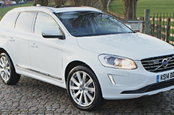This article is more than 1 year old
Uber won't face criminal charges after its robo-car killed woman crossing street
Prosecutors mull complaint against the 'safety' driver, tho
This month last year, one of Uber's self-driving cars operating in autonomous mode hit and killed Elaine Herzberg as she walked a bicycle across a road at night in Tempe, Arizona. The deadly crash is believed to be the first pedestrian death attributable to autonomous vehicle.
This week, the Yavapai County Attorney’s Office in the US state decided not to file charges against the taxi-app biz.
"After a very thorough review of all the evidence presented, this Office has determined that there is no basis for criminal liability for the Uber corporation arising from this matter," Yavapai County Attorney Sheila Sullivan Polk said in a letter to Maricopa County Attorney Bill Montgomery.
Yavapai County agreed to handle the criminal charging decision on behalf of adjacent Maricopa County, where the accident happened, due to a potential conflict of interest – Maricopa County's 2016 relationship with Uber for a public service campaign to reduce drunk driving.
Arizona was once keen to have the ride-hailing biz test its autonomous cars within its state lines. When Uber got into trouble with the California DMV in 2016 for testing its self-driving cars on California roads without a permit, Arizona Governor Doug Ducey invited Uber to conduct its tests in his state.
About a week after Uber's code-piloted car killed Herzberg in Tempe, Ducey reconsidered his invitation – and sent a letter withdrawing permission for testing to Uber CEO Dara Khosrowshahi (and released it to the media).
The case heads back to Maricopa County which now has to decide whether any charges against the safety driver, who was supposed to be monitoring the vehicle, might be warranted.
The Register wanted to know whether Uber's self-driving code was evaluated by the police, because there's reason to believe the software's not very good. Last year, the New York Times said it had obtained internal documents from Uber indicating that its robo-rides could go only 13 miles before a human had to intervene and take control. For Waymo, the time between interventions was said to be 5,600 miles.
However, a spokesperson for the Yavapai County Attorney's Office said in an email that no comment will be made while the case is still pending.
Uber declined to comment on the decision not to charge the company for Herzberg's death.
Before charges against the car's minder are considered, Polk recommends an expert analysis of the on-board video that captured the collision because the video may not present a complete picture of what happened. "The purpose of the expert analysis is to closely match what (and when) the person sitting in the driver’s seat of the vehicle would or should have seen that night given the vehicle’s speed, lighting conditions, and other relevant factors," she said in her letter.
The National Transportation Safety Board (NTSB) is still looking into the incident but released a preliminary report last June. The report says Uber's software kept reclassifying the pedestrian as it approached, first as an unknown object, then as a vehicle, then as a bicycle, which affected how the system plotted an obstacle's expected travel path.
"At 1.3 seconds before impact, the self-driving system determined that emergency braking was needed to mitigate a collision," the NTSB says in its report summary. "According to Uber, emergency braking maneuvers are not enabled while the vehicle is under computer control to reduce the potential for erratic vehicle behavior."
The safety driver is supposed to handle emergency braking, but the car's systems weren't set up to alert the driver of the need for intervention, according to the NTSB. ®

